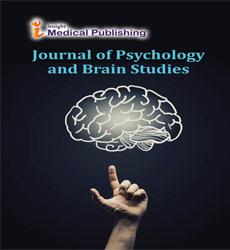Cognitive Behaviour in Older People
Anthony P. Monaco*
Department of Human Genetics, University of Oxford, Oxford, United Kingdom
- *Corresponding Author:
- Anthony P. Monaco
Department of Human Genetics
University of Oxford, Oxford, United Kingdom
E-mail: anthony.monaco@well.ox.ac.uk
Received Date: October 07, 2021; Accepted Date: October 12, 2021; Published Date: October 17, 2021
Citation: Monaco AP (2021) Cognitive Behaviour in Older People. J Psychol Brain Stud Vol.5 No.10:48.
Cognitive Behavioural Therapy (CBT) designed for eating disorders (CBT-ED) is largely regarded as the treatment of choice for adult eating disorders, particularly in non-underweight populations. It excels all active psychological comparisons, including interpersonal psychotherapy, for bulimia nervosa. A meta-analysis of 37 trials on the delivery of CBT to people suffering from bulimia nervosa found that manualized 20-session treatment protocols had considerably bigger impact sizes on cognitive symptoms than less structured CBT.
A subsequent meta-analysis of binge eating disorder treatment trials found that CBT (psychotherapy [n=58], self-help [n=17], and combination [n=34]) resulted in significant reductions in binge- eating episodes, eating disorder psychopathology, and depression at 12-month follow-up. CBT may increase self-esteem more than non-CBT methods for bulimia nervosa and binge eating disorder.
The National Institute for Health and Care Excellence guidelines for adults with bulimia nervosa and binge eating disorder, which recommend CBT-ED as a first-line treatment, reflect this research. It is recommended to begin with guided self-help (GSH), which consists of four to nine 20-minute sessions. If this technique is inappropriate, contraindicated, or ineffective, 20 CBT-ED sessions spread out over 20 weeks are recommended. At the end of therapy, an average of 40% of persons who completed CBT-ED reported abstinence from binge-eating and purging, compared to 32% of people who completed GSH.
Obsessive compulsive disorder (OCD) is a profoundly debilitating disorder accompanied with significant suffering due to distressing affects (anxiety, humiliation, and disgust) connected with obsessions that include ego dystonic drives, thoughts, and cognitions. The individual feels the urge to not only minimise the perceived threats, but also to alleviate the effects through actions. Paediatric OCD differs markedly from adult OCD. As a result, a better understanding of the characteristics that predict a poor response to cognitive behaviour therapy (CBT), the first-line treatment in paediatric OCD is a critical research concern.
OCD behaviours (i.e., compulsions) are defined in the DSM-5 as goal-directed behaviours (GDB) and voluntary acts. The powerful need to act, on the other hand, does not work in a deterministic fashion; it can be endured and potential actions inhibited. This is a precursor for CBT, in which the kid develops the ability for reaction prevention (RP) in response to exposures to the feared stimulus. Because of its better efficacy, CBT is the first-line treatment in paediatric OCD. During exposures, the person is taught to go against his or her cognitions/urges and seek out situations that are both challenging and may be seen as fearful, nasty, or unpleasant.
Through confronting his/her thoughts and feelings, staying in touch with them for a period of time throughout exposures, and exercising RP, until inhibition learning is completed. As a result, CBT involves a number of difficulties. The patient must bear powerful emotions without acting on them, go against strongly pushing thoughts/cognitions, and ignore the fight/flight response. For millions of years, these emotions and behaviours have developed as crude but mainly efficient ways of setting the individual in motion to, for example, run away from danger (avoidance), or deal with known dangers and risks. As a result, the impulses are strong and persistent, necessitating effective response suppression if CBT is to be effective.
Open Access Journals
- Aquaculture & Veterinary Science
- Chemistry & Chemical Sciences
- Clinical Sciences
- Engineering
- General Science
- Genetics & Molecular Biology
- Health Care & Nursing
- Immunology & Microbiology
- Materials Science
- Mathematics & Physics
- Medical Sciences
- Neurology & Psychiatry
- Oncology & Cancer Science
- Pharmaceutical Sciences
